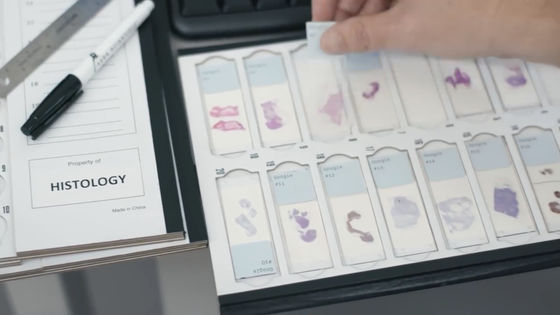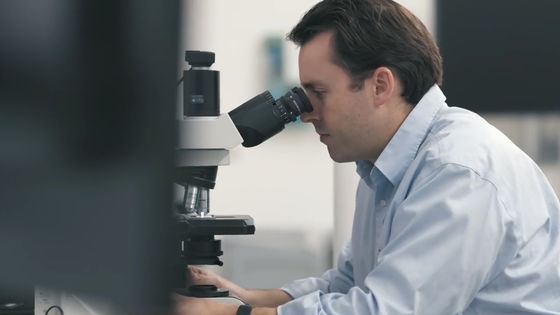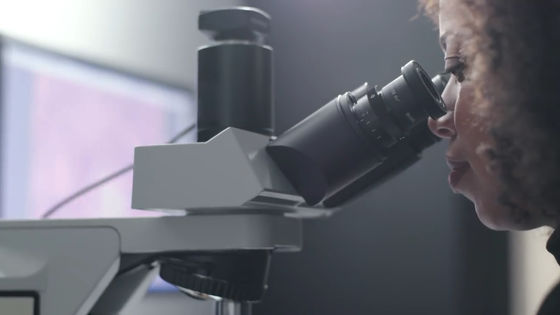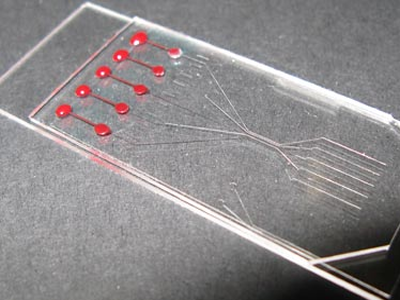Google develops technology to detect cancer in real time from images of optical microscopes with artificial intelligence

A pathologist diagnosing whether the patient's body is affected by cancer judges whether the cancer tissue is present by carefully observing the body tissue taken from the patient with an optical microscope. This work requires skillful skills to familiarize the pattern of cancer visible with optical microscopy and to efficiently inspect it, but Google has learned artificial intelligence with cancer patterns by deep learning, and in real time the cancer organization and We developed a technology to detect possible parts.
An Augmented Reality Microscope for Real-time Automated Detection of Cancer.pdf - Google Drive
https://drive.google.com/file/d/1WRBCqJItaGly-9PDSMlwQ5Ldhc8lB0lf/view
Research Blog: An Augmented Reality Microscope for Cancer Detection
https://research.googleblog.com/2018/04/an-augmented-reality-microscope.html
You can check from the following movie what kind of technology the cancer detects in real time developed by Google.
Detecting cancer in real-time with machine learning
Diagnosis by a pathologist is necessary to treat cancer.

The pathologist looks in the optical microscope and slides the sampled tissue little by little to find the cancer tissue.

Martin Stamp, a Google engineer, says, "For a diagnosis of cancer, a pathologist needs to process a huge amount of information."

Diagnosis of cancer is very time consuming, and the pathologist will feel a lot of fatigue when the work is over.

"In the task of finding cancer, it is necessary to investigate all the collected cells, and in some cases it is very difficult to detect cancer," says Tricia Brown, a pathologist, about the difficulties of cancer exploration .

Mr. Stamp's team seems to think that combining optical microscope and artificial intelligence technology would make cancer exploration more efficient.

Johnson Hip, a pathologist, talks about future prospects, "All pathologists will be able to access machine learning."

It seems that the image which the optical microscope projects is also sensed by artificial intelligence like a human being, and searches for an organization similar to a large number of cancer patterns learned by deep learning from the image.

When finding an organization that seems to be cancer, artificial intelligence displays a frame on the screen and teaches the pathologist who is watching the image.

The learning model of enormous cancer patterns has been brought about by a number of pathologists who have contributed to cancer detection so far.

"Our group of pathologists got artificial intelligence to learn cancer patterns through thousands of image samples," Hip says.

Mr. Brown says, "The assistance of imaging diagnosis by artificial intelligence,Second opinionIt's like being in real time. "

It is said that artificial intelligence will assist the pathologist in real time by diagnosing the pathologist so that the patient can approach more quickly.

"The current mission is to further improve the accuracy of cancer diagnosis"

"We save human lives, I can not think of anything that will increase our motivation any further," stamp said.

The Google developed techniques, just as pathologist to conventional diagnostic imaging to observe the tissue sample through an optical microscope image, a frame indicating a tissue AI seems cancer in real time video pathologist See Projection. Artificial intelligence always feeds back at 10 frames per second to synchronize the frame position with the image so that there is no error in the projection of the image and frame being viewed by the pathologist.

At the time of article creation, it is possible to use algorithms to detect breast cancer metastasis from lymph node samples and algorithms to detect prostate cancer from prostate samples. These algorithms operate at magnifications of 4 to 40 times, and in addition to being applied not only to cancer surveillance at other sites but also to other medical fields requiring image diagnosis, Google expects in the future is.

Related Posts:







